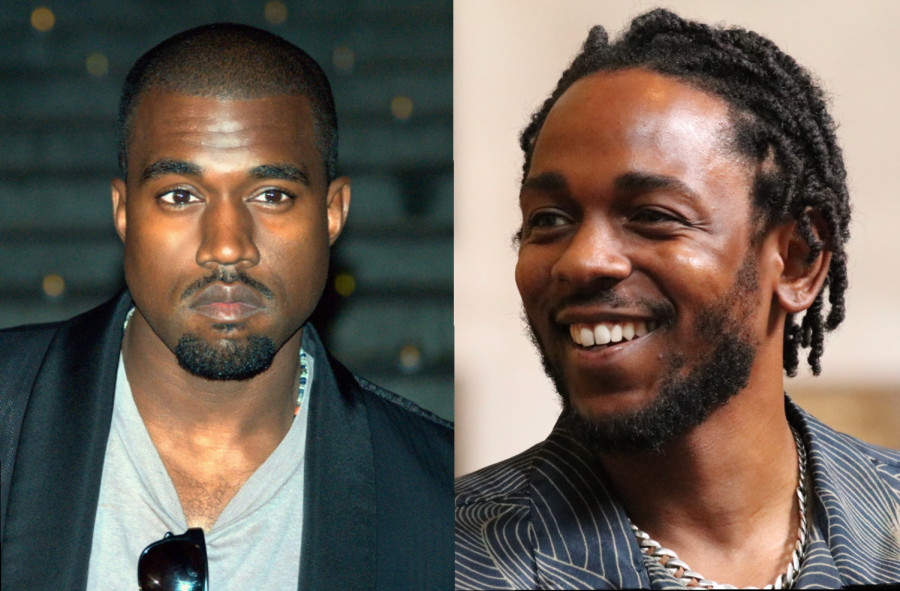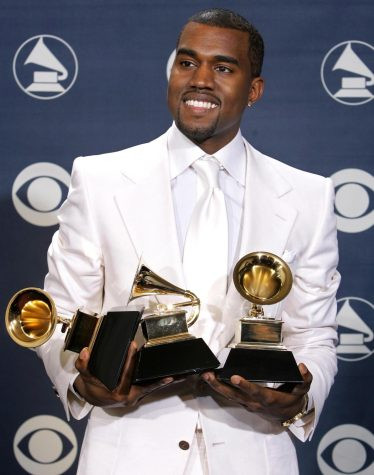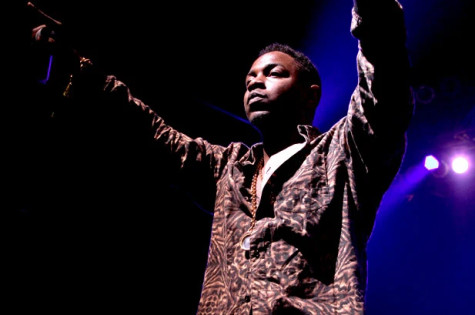 Kanye West & Kendrick Lamar: Two Geniuses, Four Songs
Kanye West & Kendrick Lamar: Two Geniuses, Four Songs
In the vast and ever-evolving landscape of music, discussions about the greatest artists of all time are common, yet intensely subjective. Narrowing the scope to 21st-century hip-hop, however, often brings two names to the forefront: Kanye West and Kendrick Lamar. These artists aren’t just rappers; they are cultural phenomena, each leaving an indelible mark on the genre and popular music as a whole. Their accolades speak volumes: Kanye West boasts an impressive 24 Grammy wins from 75 nominations, starting in 2004, while Kendrick Lamar has secured 17 wins from 47 nominations since his emergence in 2014. But beyond awards, their true impact lies in their innovative approaches to music creation, their inspiration to countless artists, and the profound depth of their musical catalogs.
What sets Kanye West and Kendrick Lamar apart is their ability to weave intricate narratives and insightful analyses of complex societal issues into their songs. This article will delve into the artistry of Kanye West, specifically exploring some of his most impactful Kanye Songs and interpreting the lyrical depth that defines his work. We will examine tracks like “Crack Music” and “Hey Mama” to understand how Kanye uses his music to explore themes ranging from systemic issues to deeply personal emotions. While acknowledging the parallel genius of Kendrick Lamar, particularly through songs like “Auntie Diaries,” “Sing About Me, I’m Dying Of Thirst,” and “Father Time,” the primary focus will remain on unpacking the rich tapestry of kanye songs and their enduring relevance.
Kanye West: Musical Innovation and Songwriting Prowess
The Rise of a Producer Turned Rapper
Kanye West’s journey began in the mid-90s, crafting beats for local Chicago artists. His breakthrough arrived in 2000 when he joined Roc-A-Fella Records as a producer. His production credits quickly accumulated, including four tracks on Jay-Z’s seminal 2001 album, The Blueprint. Transitioning to rapping, Kanye uniquely maintained his production skills, often producing his own tracks. He became a pioneer of “chipmunk soul,” a sampling technique that involved speeding up and pitch-shifting soulful samples, creating a distinctive and catchy sound characterized by vocal chops and rich instrumentals. This signature style is evident in “We Don’t Care,” the opening track of his debut album, The College Dropout, which samples “I Just Wanna Stop”, a 1978 soft rock and soul song.
The College Dropout, released in 2004, marked a significant departure from the prevailing “gangster” rap aesthetic. Kanye embraced a more relatable, down-to-earth persona, coupled with lyrics tackling serious and introspective themes. This fresh approach, combined with his soulful production, garnered widespread critical acclaim and commercial success. The album earned a Grammy for Best Rap Album in 2005, along with Best Rap Song for “Jesus Walks” and a nomination for Album of the Year, solidifying its place as a classic and one of Kanye’s best kanye songs collections to this day.
[ Kanye West at the 2005 Grammy Awards.](Kanye West at the 2005 Grammy Awards.)
Kanye West at the 2005 Grammy Awards.](Kanye West at the 2005 Grammy Awards.)
Kanye’s influence extended throughout the 2000s, culminating in his fourth studio album, 808s and Heartbreak. This project was deeply experimental, heavily featuring the TR-808 drum machine and autotune, alongside lyrics steeped in grief and introspection. Inspired by the loss of his mother and a personal heartbreak, 808s and Heartbreak pioneered a new sound that profoundly influenced artists like Drake, Kid Cudi, Childish Gambino and Frank Ocean. Many contemporary kanye songs and those of his contemporaries show the impact of this album’s sonic and thematic innovation.
My Beautiful Dark Twisted Fantasy: A Creative Peak
Following a highly publicized and controversial incident at the 2009 MTV Video Music Awards, Kanye retreated to Hawaii to channel his energy into his next album. He assembled a powerhouse of collaborators, including Jay-Z, Nicki Minaj, Elton John, and many others. The studio environment for this project was famously intense, with Kanye demanding the highest level of professionalism and focus from everyone involved. This rigorous process led to the release of My Beautiful Dark Twisted Fantasy in 2010, an album that achieved instant critical acclaim. Rolling Stone magazine ranked it 6th on their 2022 list of “The 200 Greatest Rap Albums.”, a testament to its enduring quality and impact on hip-hop and kanye songs history.
image via Austin Kleon (austinkleon.com)
While My Beautiful Dark Twisted Fantasy stands as a monumental achievement in Kanye’s discography, it’s important to acknowledge the parallel acclaim of Kendrick Lamar, whose album To Pimp a Butterfly was ranked just above Kanye’s at 5th on the same Rolling Stone list. This highlights the exceptional caliber of both artists in the modern hip-hop era.
Kendrick Lamar: Conscious Hip-Hop and Lyrical Depth
Kendrick Lamar began his rapping career in 2003 at age 16, building his reputation in the Compton hip-hop scene. He signed with Top Dawg Entertainment and released his debut studio album Section.80 in 2011, which received positive reviews. However, it was his second album, Good Kid m.A.A.d City (2012), that catapulted him to mainstream recognition. This album, with its West Coast sound and “conscious hip-hop” lyrics, detailed Kendrick’s experiences growing up in Compton amidst violence and adversity.
Good Kid m.A.A.d City is structured around a non-linear narrative, revealed through voicemails and phone calls, telling a story of youth, temptation, and tragedy. The album’s narrative depth and poignant social commentary earned it widespread acclaim, though it controversially lost the Rap Album of the Year Grammy to Macklemore in 2014.
[ Kendrick Lamar at Bonnaroo Music and Arts Festival (via Billboard.com)](Kendrick Lamar at Bonnaroo Music and Arts Festival)
Kendrick Lamar at Bonnaroo Music and Arts Festival (via Billboard.com)](Kendrick Lamar at Bonnaroo Music and Arts Festival)
In 2015, Kendrick released To Pimp A Butterfly, further cementing his status as a leading voice in hip-hop. This album continued the conscious themes of its predecessor but employed a more poetic and jazz-infused sonic palette. The album concludes with Kendrick reading a poem and engaging in a fictional conversation with Tupac Shakur, emphasizing themes of legacy and social responsibility. These albums established Kendrick as a master storyteller, deeply engaged with societal issues, though our focus here remains primarily on kanye songs and their specific contributions to the musical landscape.
Both Kanye West and Kendrick Lamar have indisputably earned their places among the best in hip-hop, boasting impressive discographies, devoted fan bases, and unique approaches to music creation. However, the immense influence they wield also comes with scrutiny, particularly regarding their public conduct and controversies.
Controversies and Public Persona
Kanye West’s Controversial Statements
Kanye West has faced significant controversy, particularly in late 2022, due to a series of increasingly problematic statements and actions. These culminated in deeply anti-Semitic remarks, including the statement “I love Hitler” during an interview with Alex Jones.
[ Kanye West’s guest appearance on Alex Jones’s talk show (via New York Mag).](Kanye West’s guest appearance on Alex Jones’s talk show)
Kanye West’s guest appearance on Alex Jones’s talk show (via New York Mag).](Kanye West’s guest appearance on Alex Jones’s talk show)
These comments have led to widespread condemnation and have significantly tarnished his public image. For many fans, it has become challenging to reconcile their appreciation for his music with his controversial persona. The question of separating the art from the artist becomes particularly pertinent when considering kanye songs in light of these controversies. While his personal conduct is indefensible, his artistic contributions remain a significant part of music history.
Kendrick Lamar’s “Auntie Diaries” and LGBTQ+ Discourse
Kendrick Lamar has also faced controversy, specifically regarding his song “Auntie Diaries” from his album Mr. Morale & The Big Steppers (2022). The song uses the F-slur and outdated language regarding transgender individuals, sparking criticism from some within the LGBTQ+ community.
Critics like Racheal Martin Willis from NPR’s Morning Edition argued that the song, while attempting to discuss acceptance, did not go far enough in addressing critical issues such as violence against Black trans women and systemic discrimination. However, others, like transgender musician Chloe Stankowski, offered a different interpretation, suggesting that the song reflects Kendrick’s personal growth from past prejudices. Stankowski noted on Twitter that the song portrays Kendrick’s journey from childhood ignorance to adult understanding and acceptance. This interpretation highlights the song’s focus on personal evolution and the complexities of societal change.
The differing interpretations of “Auntie Diaries” underscore the importance of nuanced discussions about music and its social impact. Like kanye songs, Kendrick’s work often invites deep analysis and engages with sensitive societal topics, prompting important conversations.
Song Analysis: Deeper Meanings in Kanye West’s Music
Both Kanye West and Kendrick Lamar are known for incorporating elements of “conscious hip-hop” into their music, addressing important social and personal issues. Analyzing their lyrics reveals layers of meaning and invites listeners to engage with complex topics. Here, we will focus on two significant kanye songs that exemplify this depth.
“Crack Music” – Reflecting on Systemic Racism
Released on his second album, Late Registration (2005), “Crack Music” is a powerful commentary on the impact of systemic policies on Black communities. The song directly references historical events and political figures to illustrate how policies ostensibly aimed at addressing social issues have disproportionately harmed these communities.
“How we stop the Black Panthers? Ronald Reagan cooked up an answer You hear that? What Gil Scott was hearin’. When our heroes and heroines got hooked on heroin”
These lines refer to the actions taken against the Black Panther Party during Ronald Reagan’s governorship of California (1967-1975). The Black Panthers, known for their activism and anti-capitalist stance, were seen as a threat by those in power. As the lyrics suggest, Reagan’s administration implemented policies that targeted the Black Panthers. This is directly referenced in the Mulford Act of 1967, which restricted the open carrying of firearms, a practice used by the Black Panthers in protests.
Furthermore, the song alludes to the Nixon administration’s “War on Drugs.” John Ehrlichman, Nixon’s Domestic Affairs Advisor, admitted in 2016 that the war on drugs was strategically used to target and disrupt Black and anti-war communities by associating them with drugs like heroin and marijuana and then criminalizing these substances heavily. Reagan’s administration further increased penalties for drug possession, exacerbating the impact on Black communities. Additionally, accusations of CIA involvement in funneling crack cocaine into these communities in the 1980s and 90s further crippled Black Power movements. This historical context illuminates the lines “When our heroes and heroines got hooked on heroin,” suggesting that systemic oppression led to the vulnerability of community leaders to drug addiction.
The reference to Gil Scott-Heron, a jazz poet and musician known for his socially conscious work like “The Revolution Will Not Be Televised”, reinforces the song’s message. Scott-Heron’s critical perspective on political systems and his own struggles with drug addiction, including arrests for cocaine and crack pipe possession, mirror the themes of “Crack Music.” Through these references, Kanye’s song powerfully connects historical policies to their lasting detrimental effects on Black communities, making it one of the most poignant kanye songs for social commentary.
“Sing About Me, I’m Dying Of Thirst” – The Cycle of Violence
In contrast, Kendrick Lamar’s “Sing About Me, I’m Dying Of Thirst,” from Good Kid m.A.A.d City, addresses systemic racism through the lens of community violence and its cyclical nature. This 12-minute track is divided into two parts, each exploring different perspectives on violence and its consequences. Kendrick confirmed in an MTV interview that the song is based on real events from his Compton upbringing.
The first verse of “Sing About Me” is narrated from the perspective of Dave’s brother, a friend of Kendrick who was killed in a drive-by shooting.
“You ran outside when you heard my brother cry for help Held him like a newborn baby and made him feel Like everything was alright in a fight he tried to put up But the type of bullet that stuck Had went against his will, that’s blood spilled on your hands”
These lines depict the immediate aftermath of the shooting, with Kendrick comforting the dying Dave. Despite feeling guilt, Kendrick is not blamed by Dave’s brother, who instead seeks revenge.
“A demon glued to my back, whispering ‘Get ‘em!’ I got ‘em and I ain’t give a f*** That same mentality I told my brother not to duck In actuality it’s a trip how we trip off of colors”
This verse captures the brother’s vengeful mindset, highlighting the cycle of violence perpetuated by gang culture and territorialism (“trip off of colors”). The song implies that this cycle is tragically self-destructive, as Dave’s brother, seeking revenge, is also killed:
“And if I die before your album drop I hope – [Gunshots]”
This cycle of violence is deeply rooted in systemic issues, particularly the legacy of slavery and segregation which deprived generations of Black families of wealth and opportunities. This historical disadvantage, combined with redlining and discriminatory housing policies, led to concentrated poverty and limited economic options in communities like Compton. The resulting socioeconomic conditions contribute to higher crime rates and the perpetuation of violent cycles.
[ Visual timeline illustrate the proportion of American history in which slavery and segregation occurred (via UMC).](Visual timeline illustrate the proportion of American history in which slavery and segregation occurred)
Visual timeline illustrate the proportion of American history in which slavery and segregation occurred (via UMC).](Visual timeline illustrate the proportion of American history in which slavery and segregation occurred)
Kendrick’s personal experience growing up in Compton, a city with a high crime rate, provides him with firsthand insight into these systemic issues. “Sing About Me, I’m Dying Of Thirst” poignantly illustrates the tragic consequences of systemic racism manifested through community violence.
“Father Time” – Mental Health and Masculinity
Moving to more personal themes, Kendrick Lamar’s “Father Time” from Mr. Morale & the Big Steppers (2022) delves into his relationship with his father and broader issues of toxic masculinity and mental health. The song’s opening skit, featuring a conversation with his fiancée Whitney Alford, immediately sets the stage for discussing therapy and emotional vulnerability.
“You really need some therapy [Whitney] Real ni*** need no therapy, f*** you talkin’ about? [Kendrick] Nah, nah, you sound stupid as f*** [Whitney] S***, everybody stupid [Kendrick] Yeah, well, you need to talk to somebody, reach out to Eckhart [Whitney]”
This exchange highlights the stigma surrounding mental health, particularly for men, who are often socialized to suppress emotions and avoid seeking help. The song explores how these societal expectations, often rooted in “daddy issues,” can negatively impact men’s emotional well-being.
“A child that grew accustomed, jumping up when I scraped my knee ‘Cause if I cried about it, he’d surely tell me not to be weak Daddy issues, hid my emotions, never expressed myself Men should never show feelings, being sensitive never helped”
The lyrics describe a childhood where emotional expression was discouraged, reinforcing the harmful notion that men should be stoic and unemotional. This expectation can lead to men internalizing grief and pain, as illustrated by the lines about his father returning to work soon after his mother’s death, stating “Son, that’s life, the bills got no silver spoon.” “Father Time” encourages a broader conversation about men’s mental health and the need to challenge traditional, restrictive definitions of masculinity.
“Hey Mama” – A Ballad of Maternal Appreciation
Returning to kanye songs, “Hey Mama” from Late Registration offers a deeply personal and emotional tribute to his mother, Donda West. This song is a heartfelt ballad expressing gratitude and love for his mother’s sacrifices and unwavering support.
“You work late nights just to keep on the lights Mommy got me training wheels so I could keep on my bike And you would give anything in this world Micheal Jackson leather and a glove but didn’t give me a curl And you never put no man over me And I love you for that, mommy, can’t you see?”
The lyrics paint a vivid picture of a hardworking single mother dedicated to her child’s well-being. It speaks to the universal bond between mother and child and the profound impact of maternal love and support. The chorus encapsulates this sentiment:
“I wanna scream so loud for you, ‘cause I’m so proud of you, and uh Let me tell you what I’m about to do (Hey, Mama) I know I act a fool, but I promise you, I’m goin’ back to school, and I appreciate what you allowed fo me, and I I just want you to be proud of me (Hey, Mama)”
“Hey Mama” stands as one of Kanye’s most emotionally resonant kanye songs, showcasing his ability to blend personal narrative with universal themes of love and appreciation. It became even more poignant after Donda West’s passing in 2007, transforming into a lasting tribute to her memory.
Final Thoughts: The Enduring Power of Kanye Songs
Hip-hop, at its core, is a genre of diverse expression. While it encompasses music for celebration and bravado, it also serves as a powerful medium for storytelling, social commentary, and emotional exploration. Kanye West, through his extensive catalog of kanye songs, exemplifies this duality. Alongside his energetic and boastful tracks, he has created songs that delve into complex social issues, personal struggles, and heartfelt emotions. His willingness to address systemic racism, family dynamics, and personal relationships within his music has solidified his place as not just a hitmaker, but a significant artist who provokes thought and emotional connection through his work. The exploration of kanye songs reveals a depth and complexity that continues to resonate with listeners, making his contributions to music culturally significant and enduring.
